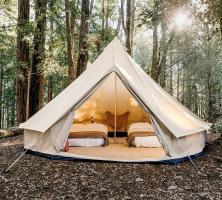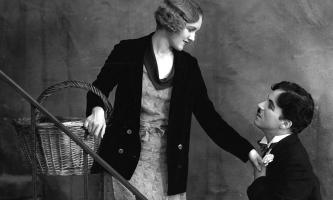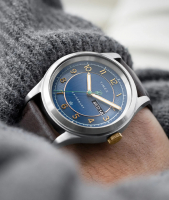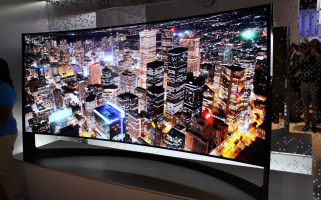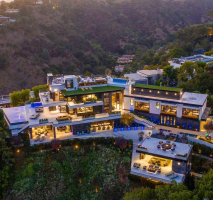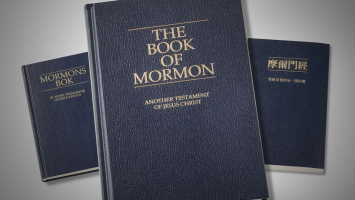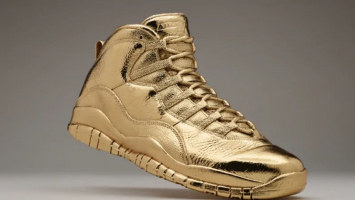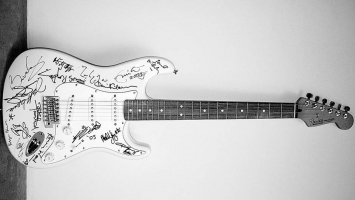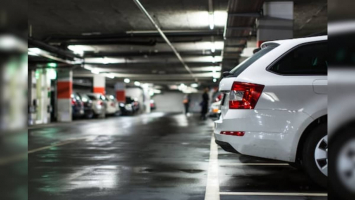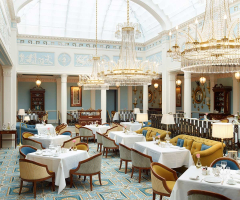Top 10 Most Expensive Carpets
Have you ever wondered what a carpet worth millions of dollars looks like? These historic carpets have all commanded a lot at auction, whether it's owing to ... read more...the sheer grandeur of their materials, their origin and history, or their rarity. The most expensive carpets in the world now are listed here.
-
This unmatched Persian masterpiece, which sold for $33.8 million (£28.3 million), is widely regarded as the most expensive rug ever sold at auction.
The Clark Sickle-Leaf Carpet rug was purchased from its original owner, entrepreneur and former senator William A. Clark, by Washington's Corcoran Gallery of Art. When the gallery made the item public, it became not only the most expensive rug auctioned, but also the most expensive piece of Islamic artwork ever auctioned, setting two world records.
The Clark Sickle-Leaf Carpet rug was auctioned off at the prestigious Sotheby's auction house in New York. The rug spans 2.7 metres in length by 2 metres in breadth and dates from the early 17th century. Kerman, an Iranian area surrounded by mountains, is said to have produced the famed antiquity. It has a gold sickle leaf design with a deep blue border that is ornately crafted. It is, however, the crimson on the carpet that adds value. This rug is said to be the only surviving Kerman carpet with this color scheme.
Cost: $33 million
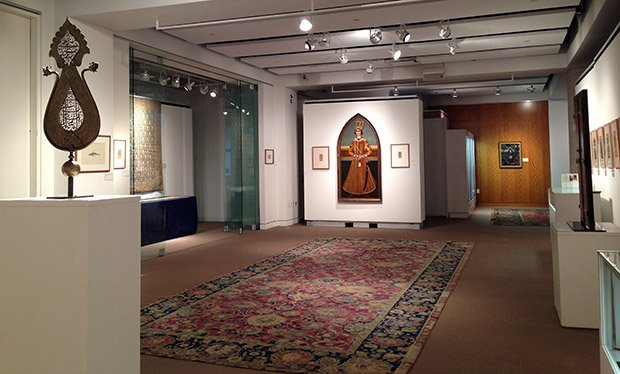
Photo: Kingsmead Carpets 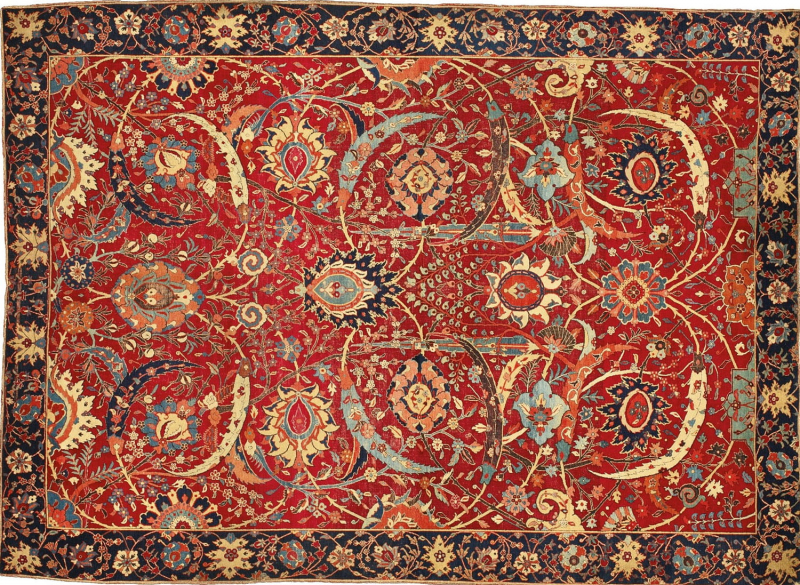
Photo: Plushrugs -
This is a fascinating story. The Kirman Vase carpet was estimated to be worth only $900 in 2009, barely four years before the most lucrative carpet sale (see above), and was later auctioned for the same sum it was acquired for: €20,000. However, the seller was dissatisfied and went to Christie's auction house, where it was estimated to be worth between £200,000 and £300,000.
The Kirman Vase carpet, with its vibrant flowers, leaves, and branches on a contrasting blue backdrop and somewhat wavy surface, was later identified as the first known rug to showcase the iconic herati design.
The subsequent auction attracted an incredible number of buyers and began at £150,000. It eventually sold for €7.5 million to a Middle Eastern bidder, making it is one of the most expensive carpets at the time.
This extraordinary piece of Persian heritage and creativity made even more history because to a fascinating argument between owners, inheritors, auction houses, and contributors, illustrating once again that certain artifacts are impossible to value.Cost: $9.6 million
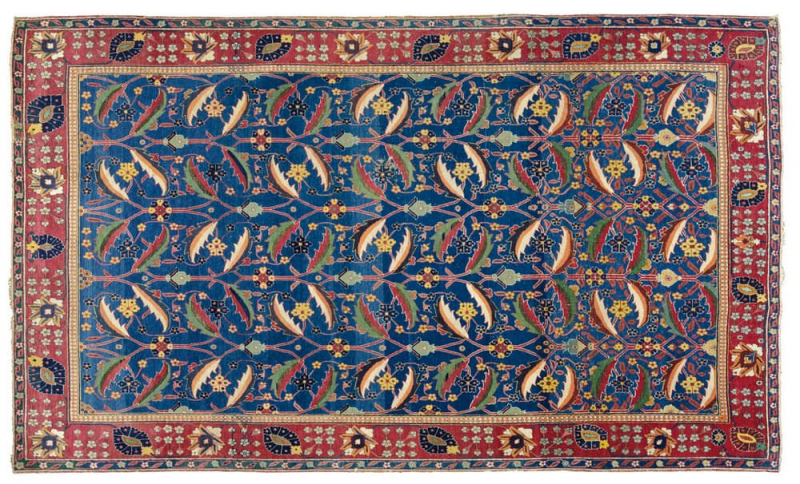
Photo: Luxatic 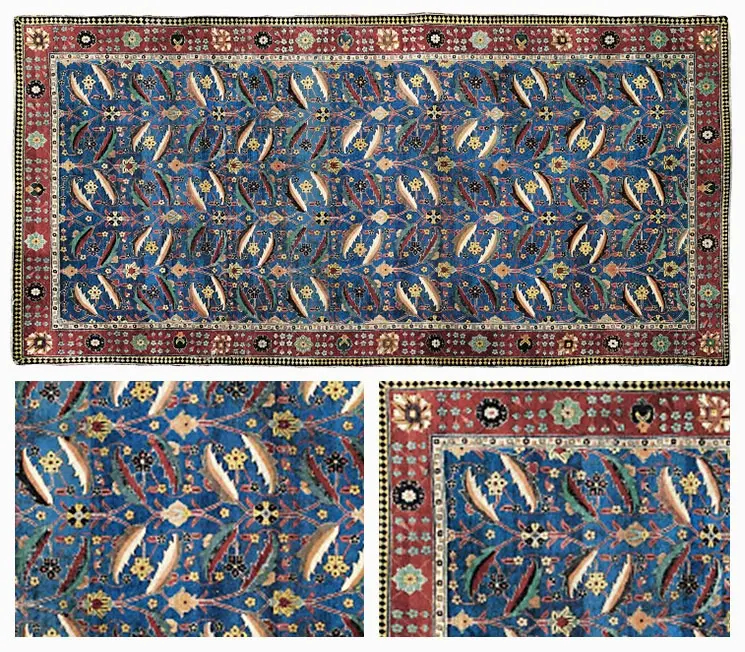
Photo: Benuta -
The Pearl Carpet of Baroda, commissioned in 1865 for the mausoleum of Prophet Muhammad in Medina, Saudi Arabia, never made it to its intended destination, but it did make its mark on contemporary history.
What makes this tapestry so special is not just the silk and beautiful deer leather basis, but also the incredible detail that makes it gleam like a piece of jewelry, which it is in some ways. At least one million Basra pearls are intertwined with English colored glass beads and other valuable stones including rubies, emeralds, sapphires, and even diamonds set in gold-topped silver on this carpet.
The Pearl Carpet of Baroda was, without a doubt, the star of Sotheby's 2009 auction in Doha, when it sold for $5.5 million to an unknown bidder. After a 150-year history of owners and inheritance, the carpet is now part of the permanent collection of the National Museum of Qatar.
Cost: $5.5 million
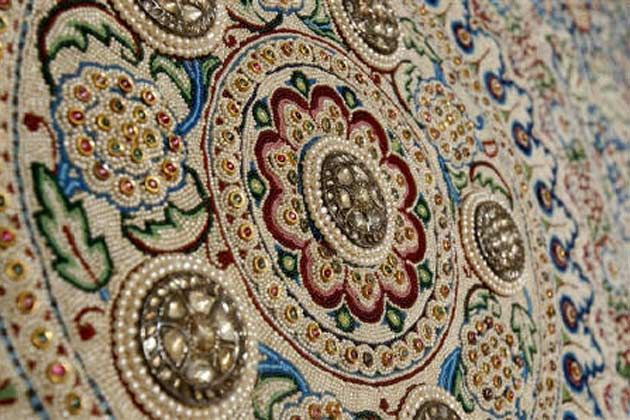
Photo: Pinterest 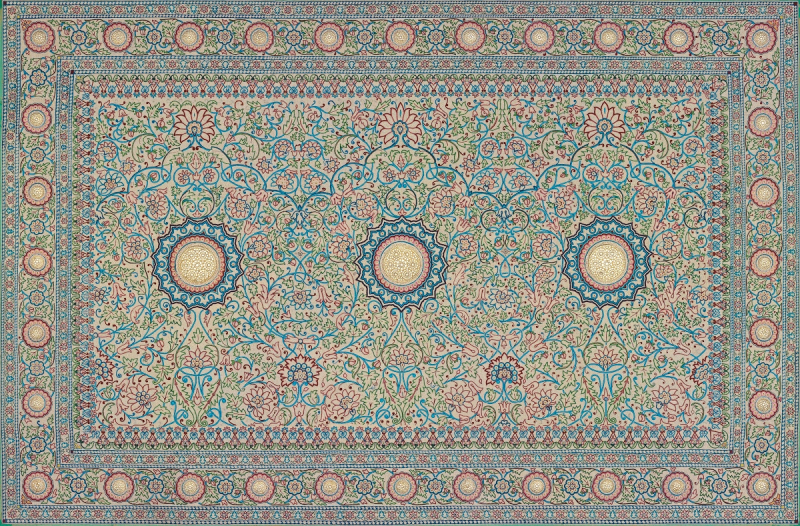
Photo: Arts And Culture -
It's no surprise that a carpet from the Far East has become one of the most valuable carpets in the world. At a Christie's auction in 2013, this 18th century North Indian rug sold for more than £4.7 million, much above its estimate.
Mughal ‘Star Lattice’ Carpet was initially owned by Cornelius Vanderbilt II, a well-known socialite and businessman, and, like practically every other object listed in this site, it has had several owners throughout the years. However, the winning bidder, who was in a close battle with another bidder, has chosen to stay nameless.
The crimson field of the Pashmina-wool carpet is framed by symmetrical arrays of pink, yellow, white, and blue jasmine and lotus blooms in a golden latticework arrangement of stars. It has just minor evidence of wear and tear, which had little bearing on the final sale price. Scholars and experts have dubbed the Mughal ‘Star Lattice’ Carpet "the most magnificent of all ornamental carpets," and properly so, being one of just 12 Millefleur (French for "a thousand flowers") carpets known to exist at the time.
Cost: 4.7 million
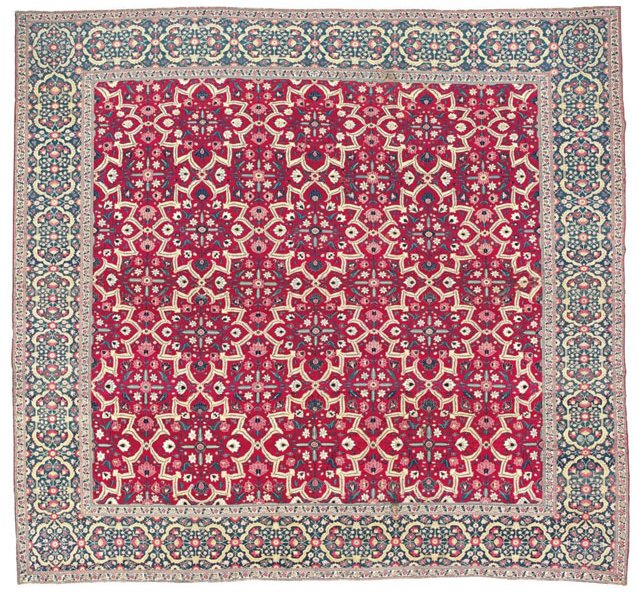
Photo: Wikimedia Commons 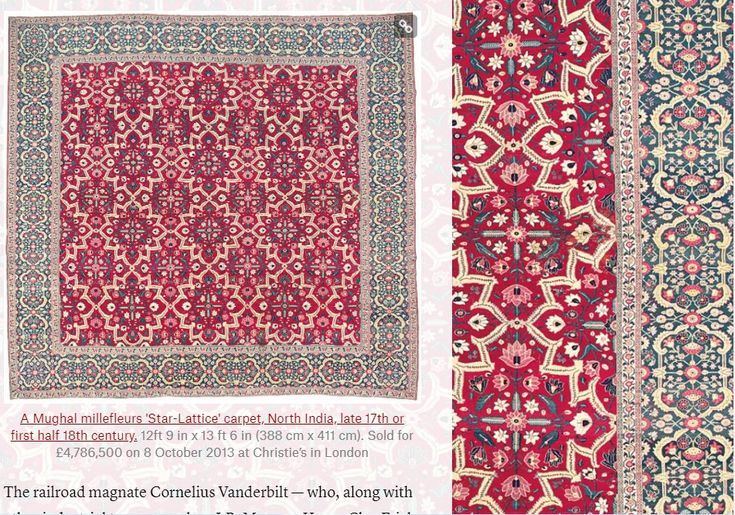
Photo: Pinterest -
The Silk Isfahan carpet, which dates from the early 1600s, sold for $4.45 million at Christie's in 2008. It measures 7'5" by 5'7", equating to $107,488.00 per square foot, which compares well to some of the most costly carpets on the market today, which may cost up to $80,000 per square foot.
During the reign of Shah Abbas the Great (1588-1629), who commissioned the construction of magnificent mosques, public baths, colleges, and many other architectural gems that still stand today, it was woven in Isfahan, an Iranian city known for the quality of its rugs and one of the most beautiful cities in the world.
Another unique feature of the Silk Isfahan carpet was recognized by Arthur Upham Pope, curator of the 1931 exhibition "A Survey of Persian Art," which included the rug at the Royal Academy in London. In relation to the rug's colour, he commented, "No more beautiful harmony was ever attained in any Persian rug."
Cost: $4.45 million
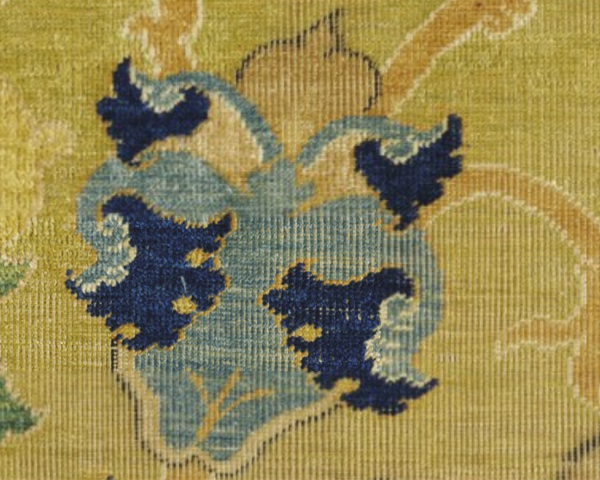
Photo: JYrugs 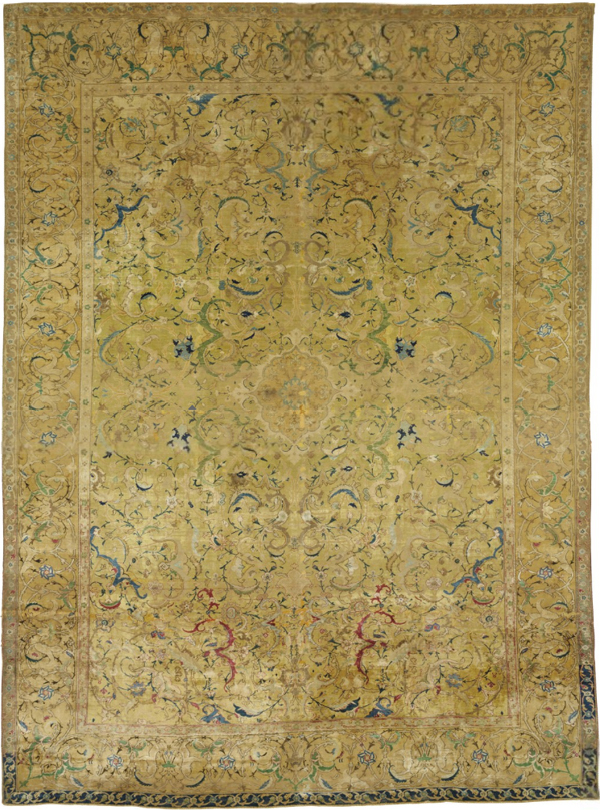
Photo: JYrugs -
This 18th-century French masterpiece may be found just a few steps away from the East. This lovely Louis XV Savonnerie Carpet, created by Pierre-Josse Perrot and woven between 1740 and 1750, is richly detailed. It's a work that awes you with its intricate, almost three-dimensional design, which depicts the 18th century royal arms of France, war trophies, flowers, and decorations in bright color.
The Savonnerie factory was established in the early 1600s to produce French replicas of oriental carpets using Turkish technology, as the import of these carpets had become a strain on the French economy.
Cost: $4.4 million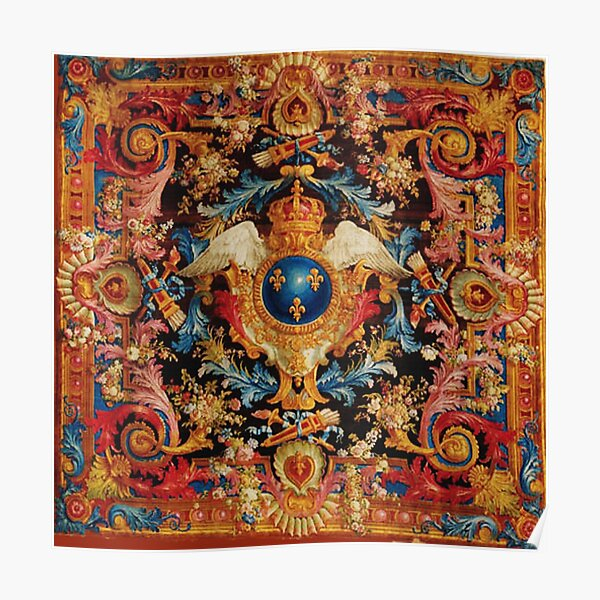
Photo: Redbubble 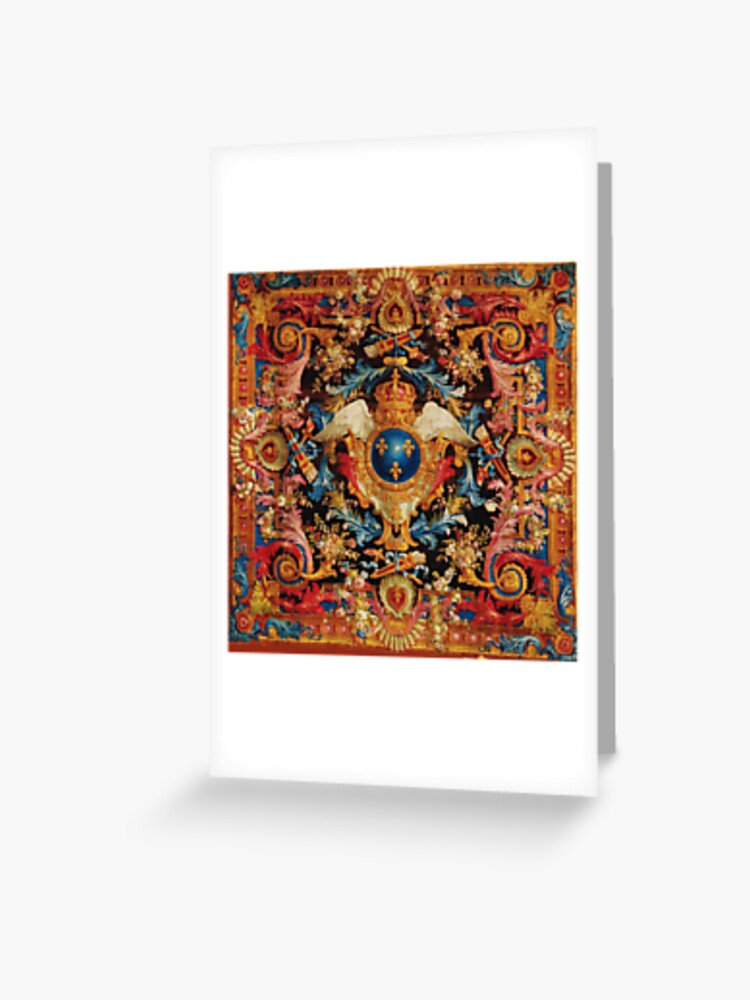
Photo: Redbubble -
We knew we couldn't write about pricey carpets without discussing the infamous art theft perpetrated by the Nazis during WWII. This superbly made Persian rug from North West Persia was "looted by the Nazis from the Austrian branch of the Rothschild family during the Second World War," according to The Guardian. They took this 17th-century carpet from the Austrian Rothschild family. The Austrian government ultimately restored it to the family in 1999.
The Rothschild Tabriz Medallion Carpet, which is over 20 feet in length, was valued at $400,000 but was purchased for $2.4 million by Sheikh al-Thani of Qatar. It became one of the most expensive carpets ever sold in the world.
The 2008 Rothschild family auction was estimated to bring in $40 million, with items including an engraved prayer book, an authentic Louis XVI commode, and many Franz Hals and Old Master pictures. The sale raised $89.9 million, breaking ten auction records: five for Old Masters and one apiece for an illuminated manuscript, an Italian manuscript, furniture, a clock, and a carpet. The Rothschild Tabriz Medallion Carpet is on display in Qatar's Museum of Islamic Art.
Cost: $2.4 million
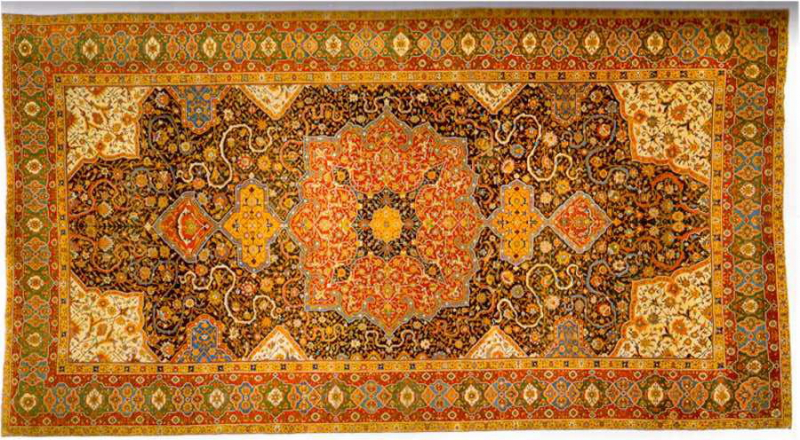
Photo: Behnam rugs 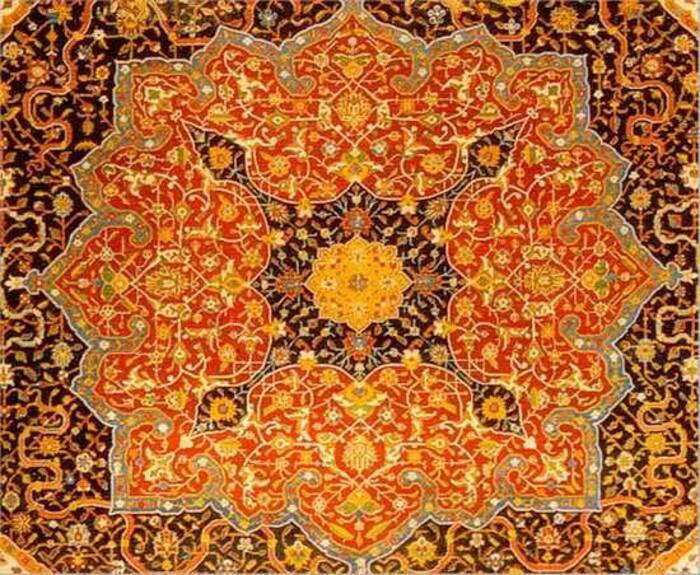
Photo: The Rich Side -
Entrie at no.8 on our list are carpet from central Persia, known as Ziegler Mahal carpet, which sold for $182,000. This item stand out with their wide range of vivid colors, including blue and terracotta, two of the colors often used in Oriental carpet.
Ziegler was one of the first large rug-making enterprises to create carpets for clients in Europe and America, and in some respects, its approach to the trade established how Persian rugs would be made by following workshops. The company is known for its deep aesthetic attention in the carpets it exports. Ziegler did more than just fund its big carpets; it also oversaw manufacturing and designed several of its own classically-inspired designs.
With its huge size, Ziegler Mahal carpet has all of the qualities of the classic Sultanabad carpets. The combination of refined earthy tones brings expansive plant themes and an iconic A&C border to life. The exquisite weaving and silky wool are typical of Arak carpets of superior quality.
Cost: $98,500
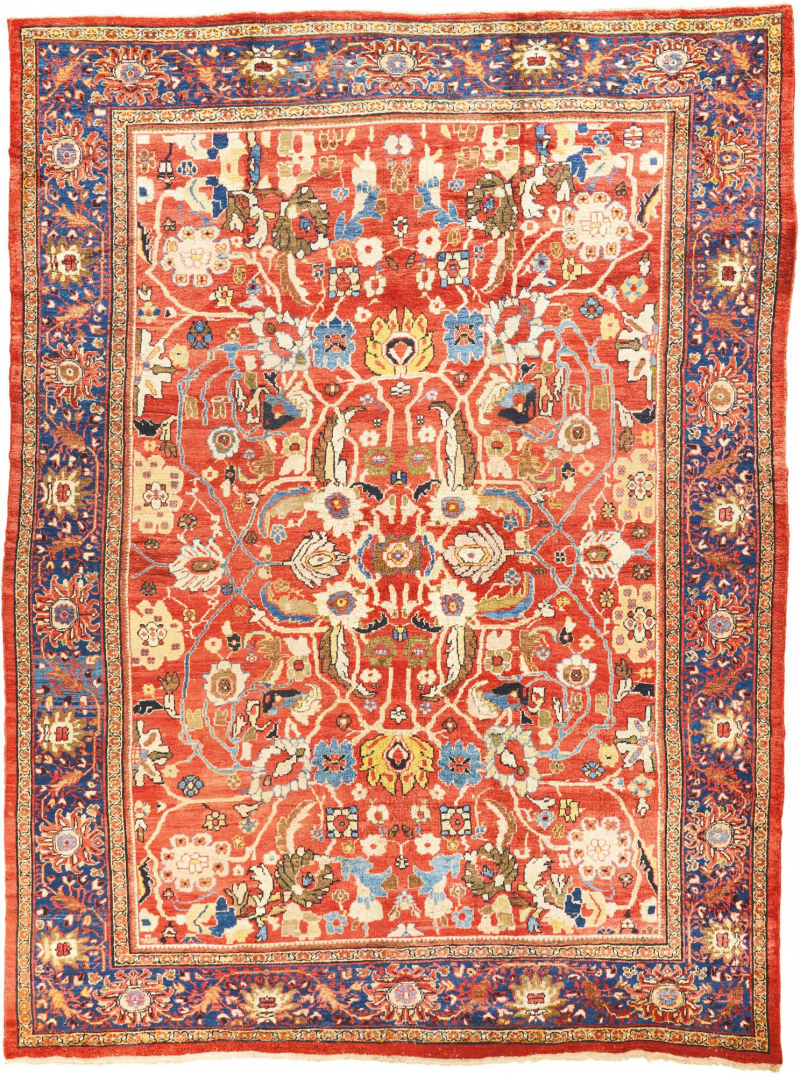
Photo: Sotheby's 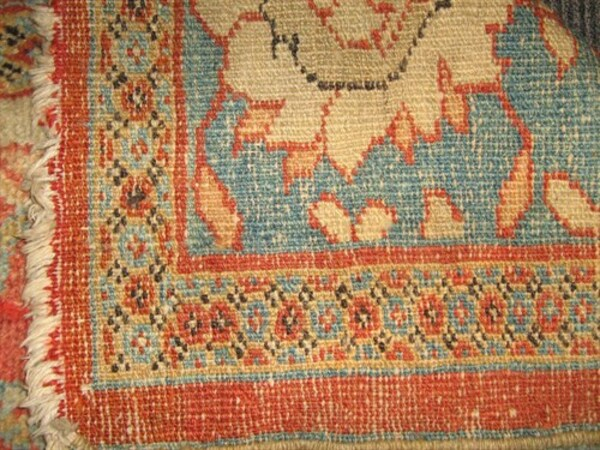
Photo: Freeman's Auction -
The Holy Carpet, also known as Ardabil, is a 16th century Persian rug presently on exhibit at the Victoria and Albert Museum in London, with a purchase price of $3,000. This is another another object with a fascinating backstory. It was commissioned about 1539 by Shah Tahmasp I to adorn his ancestors' shrine in a mosque in Ardabil (from where the rug derives its name), where it remained until its sale in 1890. The London Museum despatched its best negotiators on behalf of Ziegler, an English-Persian rug company, who bought the carpet for $3,000, an amount thought impossible at the time.
This carpet's production procedure is noteworthy: the knots in this item are incredibly fine, as is typical of carpets from the Kashan region. With a density of 520,000 knots per square meter and a total of 26 million knots, the Holy Carpet measures 61.5 square feet. Indeed, holy carpet!
This magnificent item is made of silk and fine wool, with motifs that have perplexed interpreters for years. It appears to be a sky, with the glass mosque lamps representing stars reflected on a sea surface with floating lotus flowers. The Holy Carpet is both wonderful and mysterious.
Cost: $3,000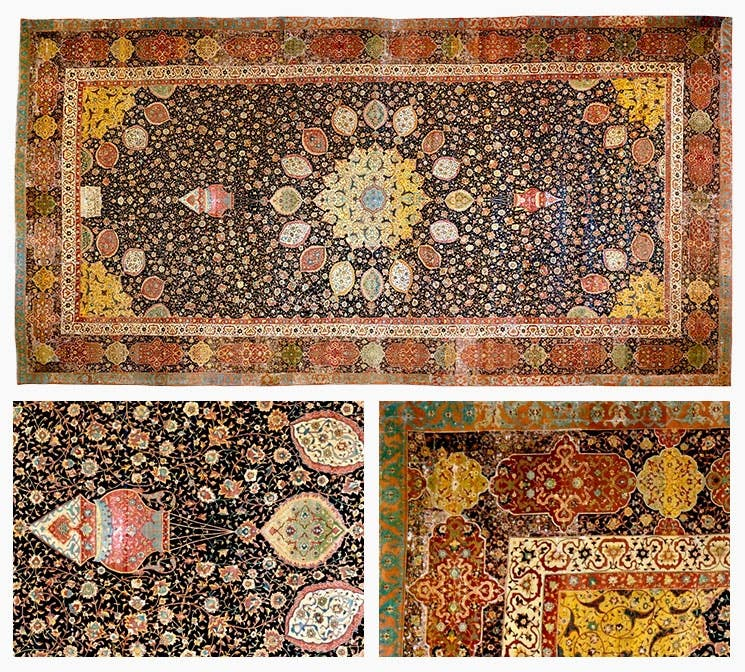
Photo: Myaffordableluxury 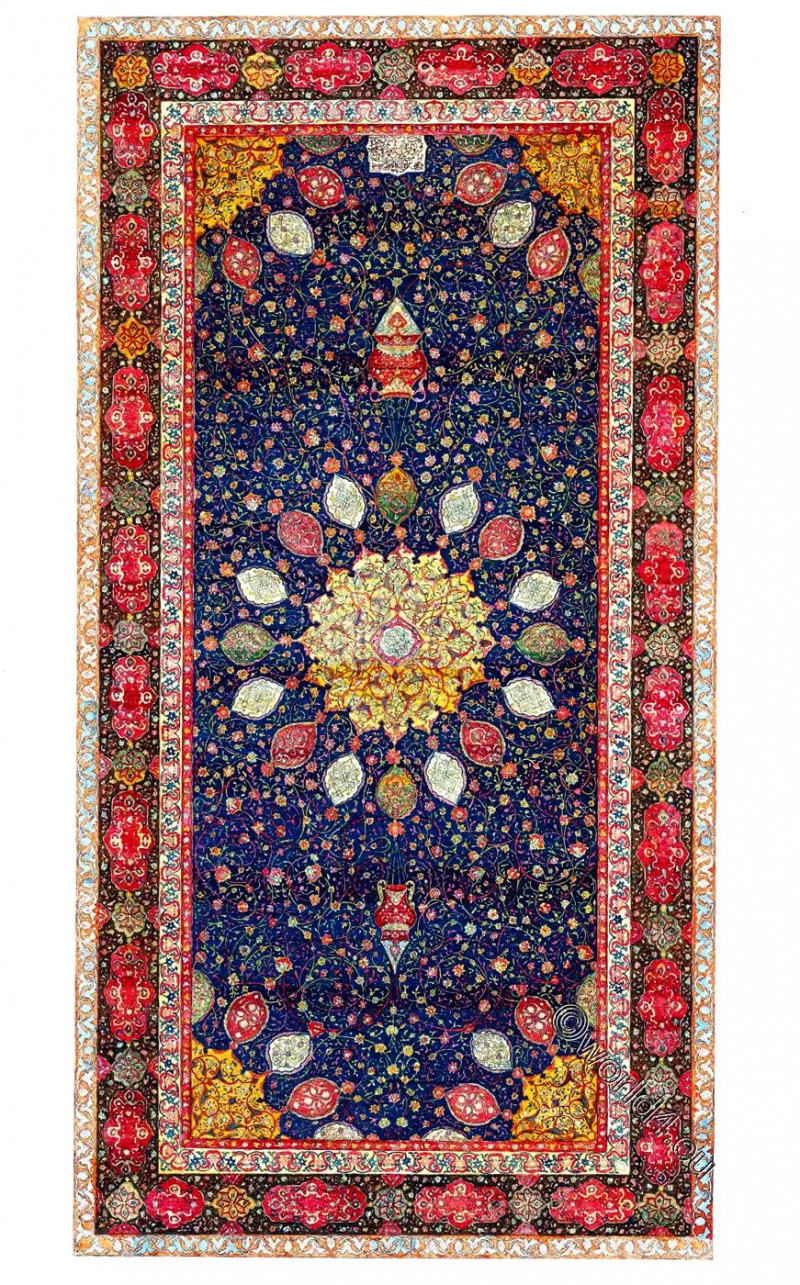
Photo: World4 -
At no.10 on our "the most expensive carpets" list is The Bayeux Tapestry. The Bayeux Tapestry, produced in Normandy in 1070 and measuring roughly 70 meters by 50 cm, has no price because of its completely incalculable worth.
This tapestry depicts the events that led to William, Duke of Normandy, becoming King of England over the course of a year. A small explanatory text "translates" the episodic pictures of battles and incidents, but a few people in the Middle Ages could read, the drawings speak for themselves. The designs, which were embroidered by nuns in the colorful thread, distinguish this tapestry from a carpet since it is woven on linen rather than knotted. It is believed that it took around ten years to finish.
This tapestry has been woven for over 1,000 years. Because the concluding images of the coronation are missing, the present 69 meters of unbroken linen would have been over 70 meters. It's unknown who commissioned it, although it's thought Duke William's half-brother, who appears multiple times on the rug, did it himself
Cost: haven't valued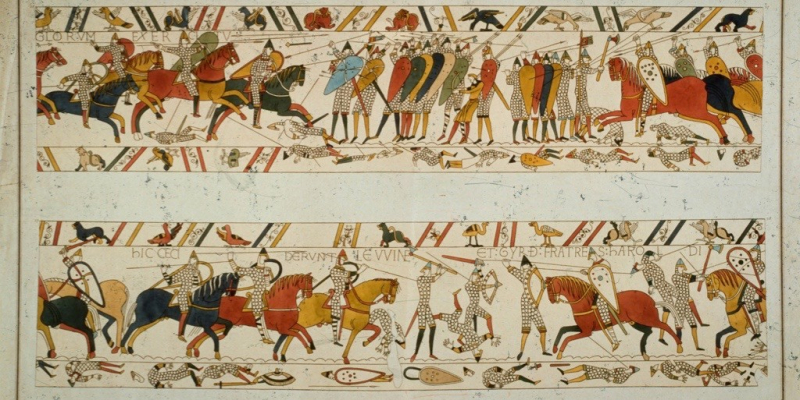
Photo: History Extra 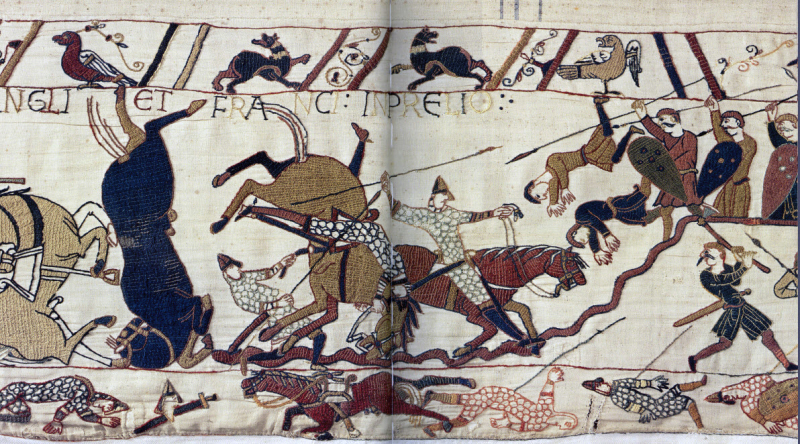
Photo: Wikimedia Commons















